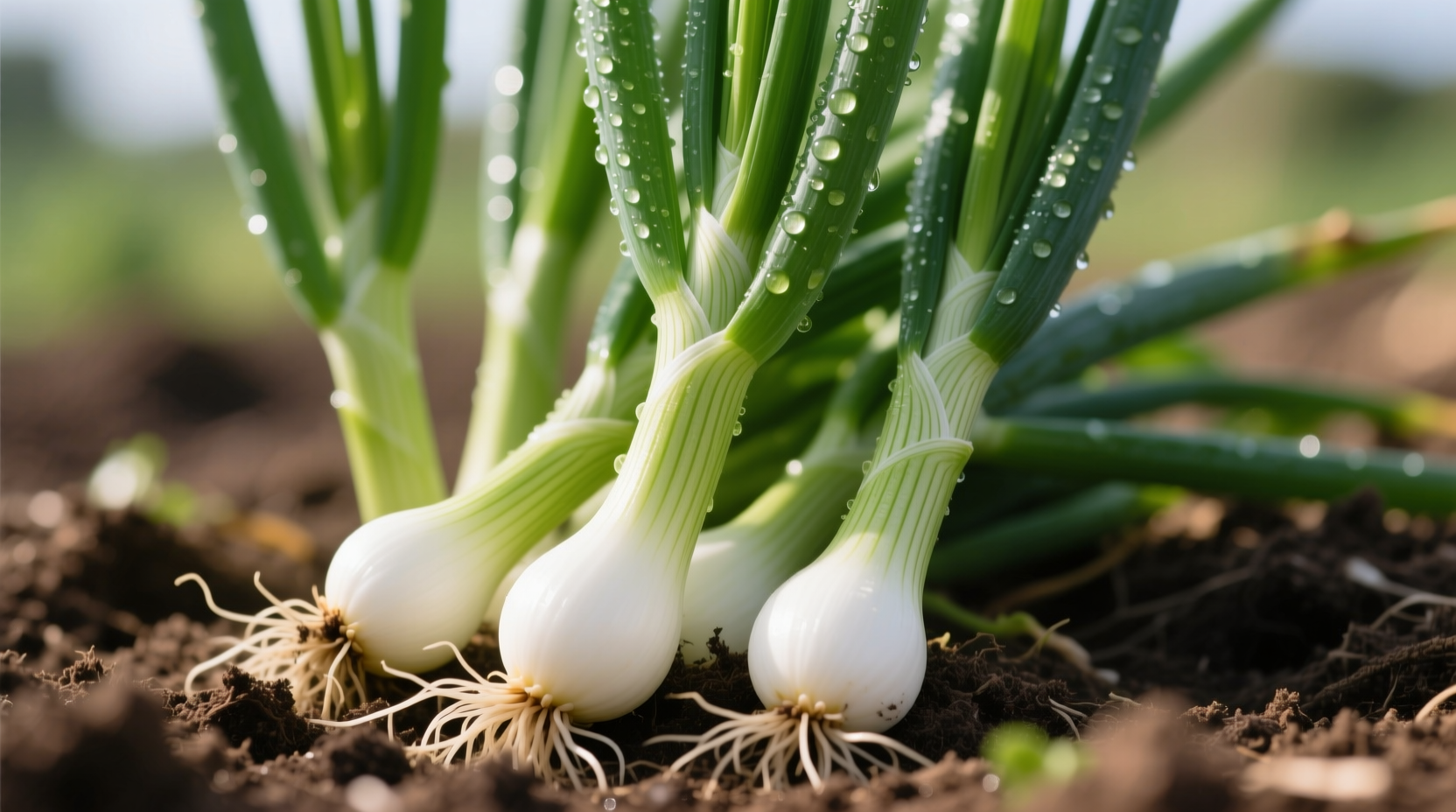If you've encountered \"kin onion\" in a recipe or conversation, you're almost certainly dealing with a misspelling of green onions—a versatile allium staple in kitchens worldwide. These slender vegetables deliver a mild onion flavor that enhances dishes without overwhelming them, making them indispensable for finishing soups, garnishing tacos, or building flavor foundations in stir-fries.
What Green Onions Actually Are (Not \"Kin Onions\")
Green onions, scientifically classified as Allium fistulosum, grow as perennial plants with hollow green stalks and small, non-bulbing white roots. Unlike mature yellow or red onions that develop large bulbs, green onions are harvested young when their stems remain tender and their bulbs barely formed. This harvesting timeline creates their signature mild flavor profile—about 30% less pungent than mature onions according to USDA flavor compound analysis.

Green Onion Varieties Compared: Clearing the Confusion
| Variety | Appearance | Flavor Profile | Best Culinary Uses |
|---|---|---|---|
| True Green Onions (Scallions) | Thin white base, long green stalks | Mild, fresh onion flavor | Raw garnishes, stir-fries, salads |
| Spring Onions | Larger red-tinged bulb, shorter greens | Sharper, more onion-forward | Grilling, roasting, sautéing |
| Chives | Hollow green tubes, no white base | Subtle garlic-onion notes | Finishing touch for potatoes, eggs |
| Shallots | Bulb-forming, copper skin | Sweet, delicate complexity | Vinaigrettes, reductions, sauces |
When Green Parts Meet White Parts: Maximizing Flavor Potential
Understanding how to use each section transforms your cooking. The white bulb contains higher concentrations of allyl sulfides—the compounds responsible for onion's characteristic bite. When raw, use whites in salsas or as aromatics; they mellow beautifully when cooked. The green stalks offer chlorophyll-rich freshness with just 15% of the pungency, making them ideal for raw applications. Professional chefs like those at the Culinary Institute of America recommend adding whites early in cooking for flavor foundation, then folding in greens during the last 30 seconds to preserve their vibrant color and delicate taste.
Preservation Science: Keeping Green Onions Crisp Longer
Most home cooks discard green onions within days, but proper storage extends freshness up to three weeks. Research from the University of California's Agriculture Department confirms that storing them root-end down in 1 inch of water inside a glass container, covered with a plastic bag in the refrigerator, maintains crispness 40% longer than traditional methods. Change the water every two days and trim brown tips as needed. For cooked dishes requiring softened texture, blanch stalks in ice water for 10 seconds before use—this technique preserves color while slightly reducing raw bite.
Nutritional Powerhouse Hidden in Plain Sight
Green onions deliver surprising health benefits beyond flavor. A single cup provides 112% of your daily vitamin K requirement (crucial for blood clotting) and 27% of vitamin C, according to USDA FoodData Central. Their allicin content—activated when cut—supports cardiovascular health similarly to garlic, though at lower concentrations. Unlike mature onions, green varieties retain higher levels of quercetin glycosides in their green portions, compounds studied by the National Institutes of Health for potential anti-inflammatory effects.
Culinary Applications Across Global Cuisines
From Tokyo's ramen bars to Mexico City's street food stalls, green onions bridge culinary traditions. In Chinese cooking, Chef Liu Wei notes that the white parts form the \"holy trinity\" with ginger and garlic for flavor bases, while Japanese chefs use the green tips as delicate garnishes for miso soup. Mexican cooks chiffonade them into fresh salsas where their mildness complements spicy chilies, and French chefs incorporate them into fines herbes blends. The key technique across cultures? Always cut against the grain—slicing perpendicular to the stalk's length creates uniform pieces that cook evenly and release flavor optimally.
Troubleshooting Common Green Onion Mistakes
Many home cooks encounter these issues:
- Bitter aftertaste: Caused by overcooking greens—add them in the final minute of cooking
- Mushy texture: Results from improper storage—never seal them in airtight containers without moisture regulation
- Overpowering raw bite: Soak sliced whites in ice water for 5 minutes to mellow sharpness
- Browning during cooking: Indicates excessive heat—cook whites over medium heat, not high











 浙公网安备
33010002000092号
浙公网安备
33010002000092号 浙B2-20120091-4
浙B2-20120091-4